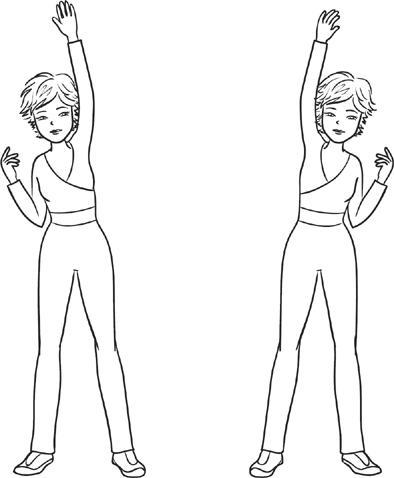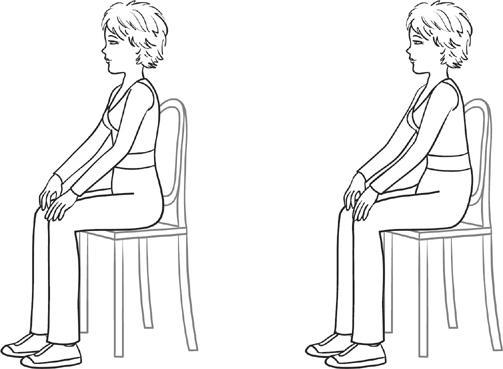Prime Time (53 page)
Authors: Jane Fonda
Tags: #Aging, #Gerontology, #Motion Picture Actors and Actresses - United States, #Social Science, #Rejuvenation, #Aging - Prevention, #Aging - Psychological Aspects, #Motion Picture Actors and Actresses, #General, #Personal Memoirs, #Jane - Health, #Self-Help, #Biography & Autobiography, #Personal Growth, #Fonda

Stem Cells
Many problems that develop with age are not caused by disease or trauma and are difficult to distinguish from the process of aging itself. One example is what is called sarcopenia, or the age-related loss of muscle mass and muscle strength; this can make it harder for an older person to perform the activities of daily living that require muscle, such as lifting objects and climbing stairs. Muscle mass also diminishes in people who have low levels of growth hormone, testosterone, or estrogen, or high levels of cortisols, the stress hormones.
The Stanford Center on Longevity’s deputy director is Thomas Rando, a stem-cell biologist. He and his team are applying targeted science and technology to understand ways to maintain muscle tissue so that people can remain strong and independent even into old age.
Stem cells are like building blocks that are able to become whatever tissue is needed—they can become skin cells when in the skin or muscle cells when put into muscle. But in order for stem cells to do their job of repairing injured tissue, they have to receive the right signals from the surrounding damaged tissue. Signals can come from uninjured cells in the tissue, from hormones and other factors in the blood, and also from cells of the immune system that migrate into the damaged area to clear away dying cells. Stem cells respond to those signals by dividing many times in order to generate enough cells to replace the cells that were lost. Because stem-cell repair is so much less robust in older animals, scientists believed that age causes stem cells to lose their efficiency. Dr. Rando’s team at Stanford discovered, however, that when the old stem cells were exposed to factors in the blood of younger animals, the stem-cell activity in the old tissue was just as robust as that in young tissue. Turns out there are substances in old blood that suppress stem-cell function, and if scientists can develop a drug to block these suppressors, they may be able to modify old blood and allow for faster, more effective healing of old or damaged tissues.
The science of aging is growing fast, and there are real prospects: new theories, new ideas, and new technologies that can improve function in older people if we can just fund the needed research. Dr. Rando explained to me in detail how the new understanding of the human genome tells us about the genes that are affected in the ongoing biological processes of age and provides the possibility of doing genetic repair in a variety of ways. “If we know what genes are turned on or turned off as you age, maybe we can give you the proper gene product that you no longer have,” he said. “Or maybe we can perform ‘genetic adjustments’ to give you the proper gene product that you need to repair a damaged tissue. Or maybe we can find ways—this is reasonably possible rather soon—to replace aberrant or damaged genes that increase the risk of developing some age-related diseases. I would submit, however, that none of these developments are going to produce dramatic changes in the life span of human beings. What it is going to change, we hope, is the health span of those same human beings.”
APPENDIX II
Prime Time Exercises
Y
ou will need a sturdy armless chair and hand weights. These can be dumbbells, cans of food, or bottles of water. Start with light weights and, as you get stronger, increase the weight until you can do the prescribed number of repetitions and no more. Be sure to read the instructions completely before beginning each exercise.
Warm-Up
We begin by warming up the major muscle groups with three exercises.
- While standing, reach up tall first with one arm, then the other. Really feel a stretch up your sides. Keep your abdominals pulled up and your spine extended upward.
- Standing with your arms on your hips and your feet a little more than hip width apart, bend and straighten your knees as far as is comfortable 5 times, putting your weight on your heels. Next, add a lift with your arms coming overhead as you bend your knees; bring them back down as you straighten. Exhale as you squat; inhale as you straighten. Do this 5 times.
- Stand tall and bring your arms out in front of you and then pinch your shoulder blades together by bringing your elbows back as far as you can, keeping your arms horizontal and at shoulder height as you do. Breathe as you do this and repeat 5 times.
Exercise 1 /
SEATED PELVIC TILTS
These work the gluteal muscles, in your buttocks.
- Sitting up tall, pull in your abdominal muscles as though you were protecting yourself against someone about to punch you in the stomach.
- Keep your shoulders back and your chest lifted, but without letting your rib cage stick out.
- Now rock your pelvis forward and squeeze those gluteal muscles hard, tightening your abdominals as you squeeze. Hold the squeeze for 3 seconds and then release.
- Exhale as you squeeze, and inhale as you release. Repeat 15 times.
Exercise 2 /
SEATED ABDOMINAL CRUNCHES
Strong abs pull in your gut and protect your back.
- Continue to sit up tall, as in the previous exercise.
- Contract your abdominals by tightening those muscles. Hold for 5 seconds and release.
- Exhale on the squeeze and inhale on the release. Repeat 15 times.
Exercise 3 /
CHAIR SQUATS
These work your quadriceps muscles, in the front of your thighs.
- Stand up tall in front of your chair and, with your hands on your thighs, sit down and stand up. Do this 15 times, exhaling as you stand, inhaling as you sit. As you get stronger, put your hands on your waist.
Exercise 4 /
SEATED BICEPS CURLS WITH LEG LIFTS
These strengthen the muscles in the front of the thigh and the front of the upper arm.
- Sit up tall with your arms hanging down at your sides and a weight in each hand.
- Raise your right leg straight out to knee height, keeping that thigh level with the other thigh and squeezing those thigh muscles and the muscles around your knee. Hold in this lifted position for 2 seconds before lowering.
- As you do this, curl both weights up to your chest; lower them as you lower your leg. Control the weights—don’t just let them drop. Exhale on the lift, and inhale as you lower the weights.
- Repeat with the other leg. Do this 16 times. Each leg lift counts as one repetition.
Exercise 5 /
STANDING SIDE ARM LIFTS
These work your shoulder muscles—the deltoids.






